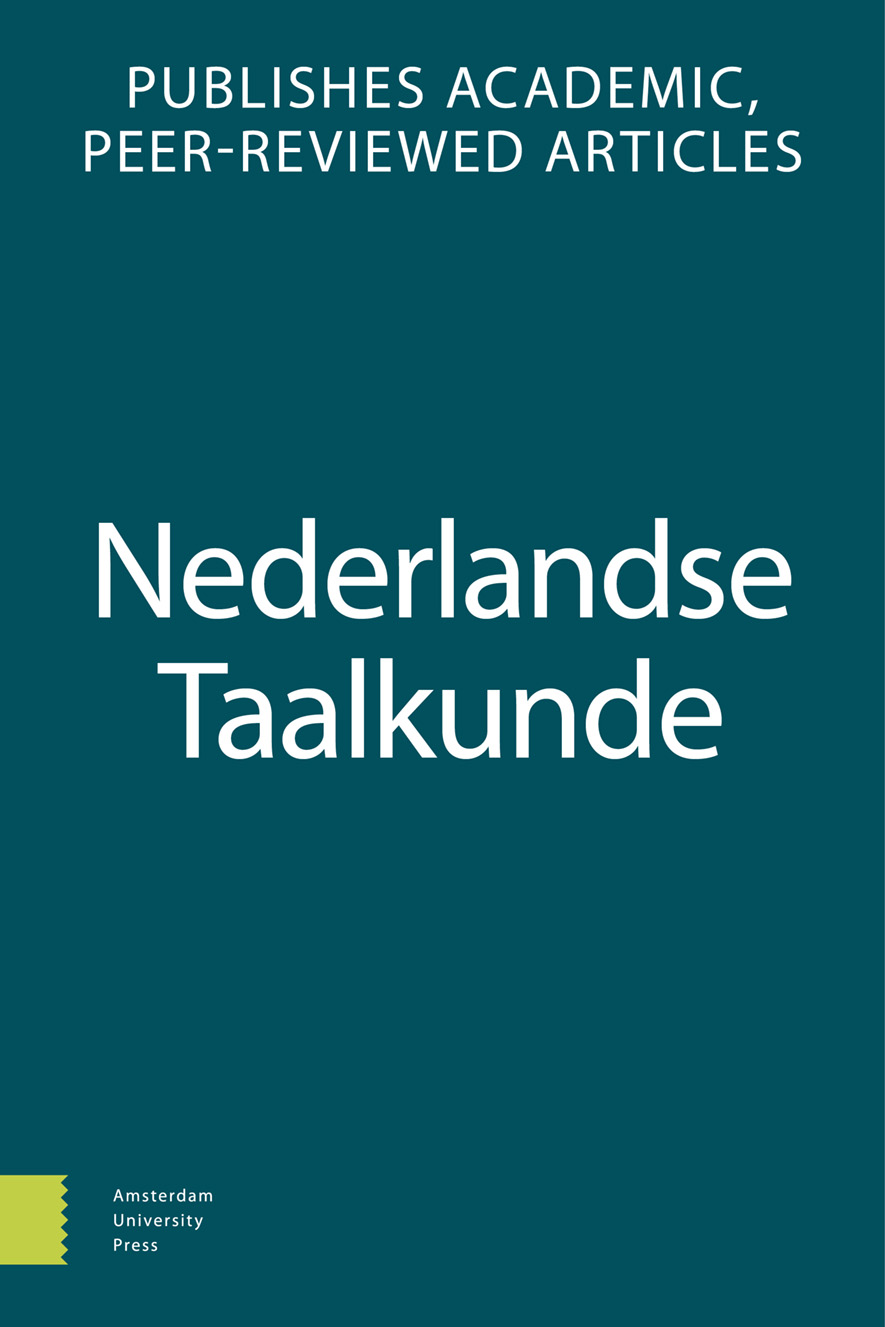- Home
- A-Z Publications
- Nederlandse Taalkunde
- Previous Issues
- Volume 26, Issue 2, 2021
Nederlandse Taalkunde - Volume 26, Issue 2, 2021
Volume 26, Issue 2, 2021
Language:
Dutch
-
-
Verstaanbaarheid als interactioneel en contextgebonden fenomeen
More LessAuthors: Ellen Simon & Chloé LybaertAbstract As a result of growing mobility and migration flows, the number of non-native speakers of Dutch in Belgium and the Netherlands have gradually increased over the past decades and so have the number of people enrolled in Dutch as a Second Language education. While there is huge variation in the profiles of these non-native speakers, they almost exclusively have in common that their Dutch sounds, in some wa Read More
-
-
-
First language effects on the identification and evaluation of second language speech
More LessAbstract In Belgium, Dutch as spoken by Francophone learners is relatively frequent in political, commercial or educational contexts. While the characteristics of this second language (L2) variety have been studied extensively, there is to date no systematic report of how it is evaluated by either native speakers of Dutch or non-natives. Previous studies conducted in other language contexts have found that non-natives tend Read More
-
-
-
Begrijpelijkheid en accent bij beginnende NT2-leerders
More LessAuthors: Bart Deygers & Carolien FrijnsAbstract In social interaction, foreign language accent and comprehensibility impact how we perceive our conversational partners. In recent years, research interest in these constructs has been on the rise, while many issues remain underexposed. These issues include the relationship between comprehension and accent on the one hand, and background variables of both learner and assessor on the other. Since most research t Read More
-
-
-
Hebben we oren naar anderstaligen in het Vlaamse hoger onderwijs?
More LessAbstract In order to enroll in Flemish higher education, aspiring students whose native language is not Dutch require a B2 CEFR level for language proficiency for most courses that are taught in Dutch. The question we aim to answer in this study is how future interlocutors of these students perceive that B2 entrance level. Do fellow students, lecturers and other members of staff feel that this level of language proficiency is s Read More
-
-
-
Dutch listeners’ evaluations of degrees of German-accented Dutch
More LessAuthors: Berna Hendriks, Frank van Meurs & Koen van GelderAbstract The effect of non-native accented speech on speaker and message evaluations is well-researched for English, but accent-induced effects in languages other than English have been underexplored. The purpose of the present study is to investigate the effects of a weak and strong German accent in Netherlandic Dutch on Dutch listeners’ perceptions of and attitudes towards the speaker and the message (in terms o Read More
-
-
-
The contribution of prosody to intelligibility, comprehensibility and accentedness in foreign language acquisition
More LessAbstract The purpose of this paper is to review recent research illustrating the importance of prosody in foreign language acquisition, and to examine whether music might help in this learning process. The paper starts off by defining prosody and by examining previous research on foreign language prosody acquisition, stating the difficulties for learners and the potential effect of non-native prosody on communication, nota Read More
-
Most Read This Month
Article
content/journals/13845845
Journal
10
5
false
en

Most Cited Most Cited RSS feed
-
-
Goed of fout
Authors: Hans Bennis & Frans Hinskens
-
- More Less

